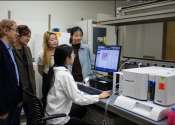Herbal supplement shows promise against lung cancer
Berberine, a natural compound found in plants such as barberry and goldenseal, suppresses the proliferation of lung cancer cells in the lab, new research shows. It also reduces airway inflammation and damage to healthy lung ...
May 30, 2022
0
323








